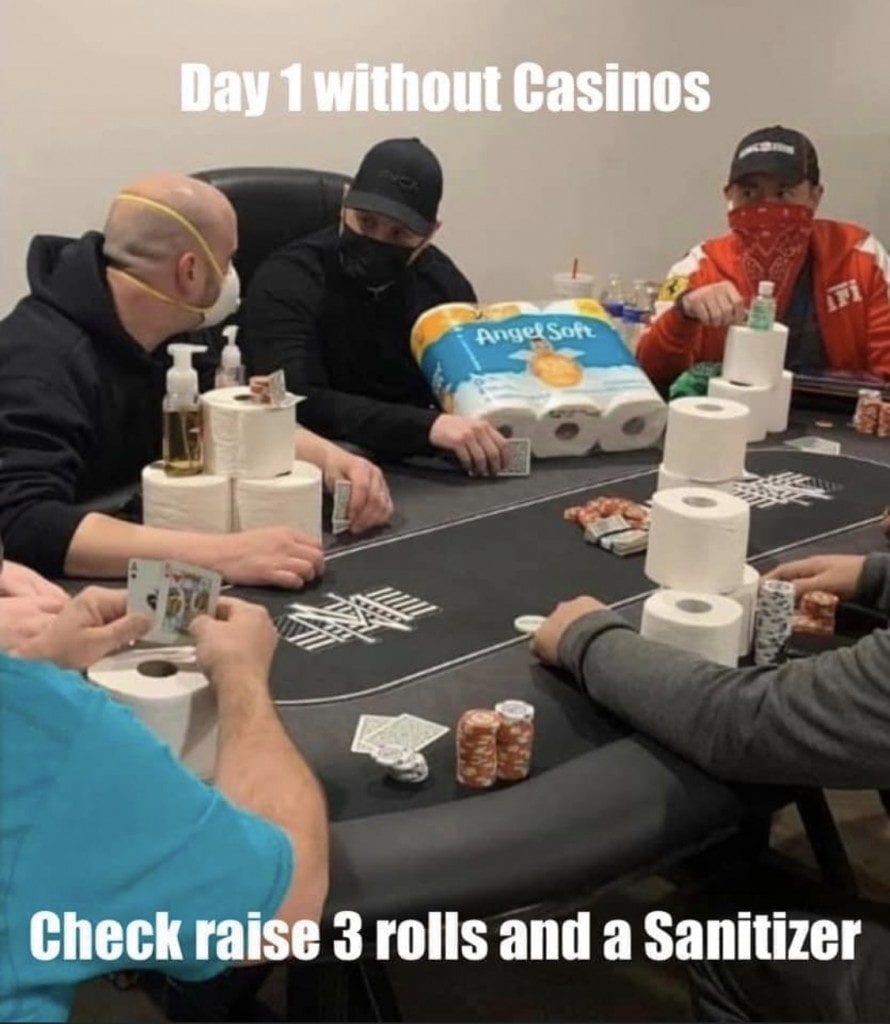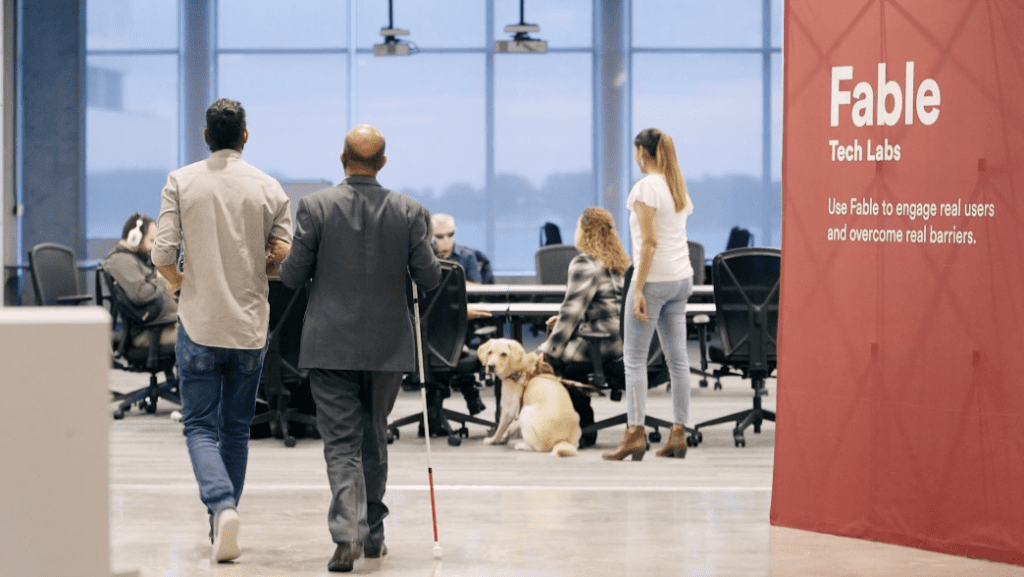Insights: COVID-19 and its impact on people with disabilities
While there has been nearly wall to wall coverage of COVID-19 in the media, one voice has been notably missing: that of people who live with disabilities. In order to amplify the voices of those with disabilities, our community participated in a brief survey about how COVID-19 is affecting us. In this edition of Fable Insights, as a member of this community, I will highlight some of that data, and some of the anonymous quotes provided by our community members. We hope that this perspective will provide you with some food for thought about how the 19% of North Americans who live with disabilities are having their lives changed by COVID-19.
“The globe is slowly shutting down and isolating us even more than we already are. The mentally disabled and physically disabled have always been isolated in some respects, and now are afraid of becoming even more so.”
Looking for accessibility insights?
When it comes to accessibility, we think that lived experience is often missing from the conversation. To bridge that gap, Fable produces an occasional newsletter called Insights. Subscribe and you will receive the latest perspectives on accessibility and usability from assistive technology users.

‘Flattening the curve’ is vital context
Full access to data has always been understood as a vital right by people with disabilities. Today, it is apparent that access to data can be a matter of life and death. How is it possible to decide what an appropriate level of action might be, without access to local maps of community spread? How can anyone decide if the government is making the right policy decisions, without access to the graph of the curve, and being able to understand how a set of actions will change that graph?
“As charts depicting the spread of Coronavirus and modelling how to flatten the curve are seen and discussed worldwide with blind and visually impaired people largely excluded from the conversation, we are starkly reminded that non-visual access to data is vital to our equality and well-being.”
Fortunately, there are companies and organizations who have taken the time to make a flatten the curve model available through sound (shout out to Desmos). For folks who are visually impaired, this can be an essential tool to understand today’s situation. Check out the video below to see Ka explore a sonification of the ‘flatten the curve’ concept. Pro tip: You can follow Ka on LinkedIn to keep up to date on the work different people are doing to make COVID-19 data more accessible.
We need laughter, too

In the Internet age, memes have become an important part of how people community. Today, they are one of the strategies that people are using to relieve anxiety and see the lighter side of things. Unfortunately, many people with disabilities are left out of this content entirely. This leaves only the unrelentingly serious and frightening messages from mainstream news.
“A lot of people are spreading a lot of really positive/funny memes. While memes lacking alt-text don’t normally bother me, in this time of anxiety, I feel like I could really use the boost of some humour or something positive.”
Full access to data has always been understood as a vital right by people with disabilities. Today, it is apparent that access to data can be a matter of life and death. How is it possible to decide what an appropriate level of action might be, without access to local maps of community spread? How can anyone decide if the government is making the right policy decisions, without access to the graph of the curve, and being able to understand how a set of actions will change that graph?
The financial impact of COVID-19
“My husband works and is visually impaired and currently his job is closed. Right now we are ok, but who knows down the road and we have 3 children.”
The majority of our community is feeling worried about how COVID-19 will impact them financially. Unfortunately, in every economic downturn, those with disabilities are first effected. When budgets get tight, accessibility can often be the first thing on the chopping block. When governments need to make cutbacks, services for those with disabilities are often the first to be cut. While people with disabilities haven’t been effected yet in this way, there is a lot of worry based on historical experience.
Have you experienced any financial impact from COVID-19?
| Yes, a serious impact | 4.2% |
|---|---|
| Yes, some impact | 25% |
| No, but I'm worried about it in the future | 58.3% |
| No, and I don't think I will | 12.5% |
One of the less reported on warnings from the World Health Organization in light of COVID has been the need to support people with disabilities globally (Article: Preventing discrimination against people with disabilities in COVID-19 response).
Practically risky

“I usually walk up to communion with somebody using sighted guide. How will I do this if I can’t touch anybody? What if they agree to let me walk with them and then they contract the virus? will I be to blame? Will I be liable?”
This fear can extend well beyond religious services, and makes asking for help (an already stressful experience) much more stressful as we worry about how someone might be negatively effected by helping out. Nobody wants to ask someone else to risk their life to help as a guide in the grocery store. Similarly, people with disabilities can’t follow much of the advice being given by healthcare workers during this time, and that also creates a lot of fear and stress.
“I feel like when (if) I go out, I touch a lot more things, and can’t really avoid doing so (elevator panels, searching for doorknobs, hand railings, and so on). So, instead of giving me things I can do to stay safe, most of the advice in the media is telling me I absolutely must do things I absolutely can’t do.”
One effect that is new and terrifying, however, is the fear that those with disabilities are more vulnerable to catching the virus. Similarly, there is a lot of fear that because of this vulnerability, we are much more likely to spread this sickness to our friends, family, and those whom we love. At the same time, our need to have close contact with others to accomplish some tasks doesn’t change.
“The fact is that we are more susceptible to contracting the disease than most due to, in some cases, needing to interact with more people to accomplish certain tasks.”
A unique opportunity to make a difference
Regrettably, the change that many people are feeling most strongly as a result of this virus is having much less impact on those who live with disabilities. Due to inaccessible spaces, the difficulty of travel, and societal stigma, many with disabilities go days or weeks without leaving their homes. Already isolated due to these issues, rather than COVID creating a new experience, this is simply an intensification of something we already feel.
“…if you’re already living with an illness that you know could take your life and you fight against it each day already, then something like what is going on isn’t new to you… You also will have developed methods to keep you from freaking out and to help you manage your symptoms/illness/disease. Basically, this isn’t new to people with disabilities…”
The changes brought about by COVID offer us a unique opportunity to make a difference. As conferences move online, we have a chance to make the experience of attending a conference more accessible to more people than it has ever been! As we all find new and different ways to network, we can bring these gatherings into reach of people who may not have been comfortable or able to take part before. With a little empathy for those who find leaving the home difficult for reasons other than a virus, we can bring something extremely positive out of this struggle.
“We are well prepared for this sort of thing. It’s our lives. We always have to be extra careful about not sharing germs. It would be nice if everyone around us had such awareness, because then we wouldn’t have to be so over-vigilant.”
What can you do?
Covid-19 is changing our society in massive ways. If we are thoughtful and intentional about these changes, we can make everything better for everyone:
Accessible data: The techniques for making charts and graphs accessible to everyone have been long understood in the research labs. COVID-19 should highlight for all of us that it’s long past time to bring these ideas and technologies out of the lab, and into the public venue where they can work for everyone. If you’re working on digital products, get in the habit of making data visualizations accessible.
Inclusive communication: As everyone is now forced to figure out how to work from home, let’s make these processes, tools, and spaces accessible to everyone. That way, this effort will continue to benefit millions of people who need to work from home, even after the virus is gone. We can then increase employment and wellbeing for everyone, and keep it that way.
Awareness: After COVID-19 is defeated (and it will be defeated), germs won’t just go away. Let’s make sure to remain aware of the techniques we have employed now, so we can continue to use them to make safer, more welcome environments, for those with compromised immune systems.
Reach out and include everyone: Got a funny meme to share? Include alt-text when you post them, and caption the photos you share on Facebook. Make sure that our online conferences take this unique opportunity to include those who were previously isolated, or could not attend due to accessibility concerns.
COVID-19 is offering us all the opportunity to rebuild the way we do business. Let’s build it better!
